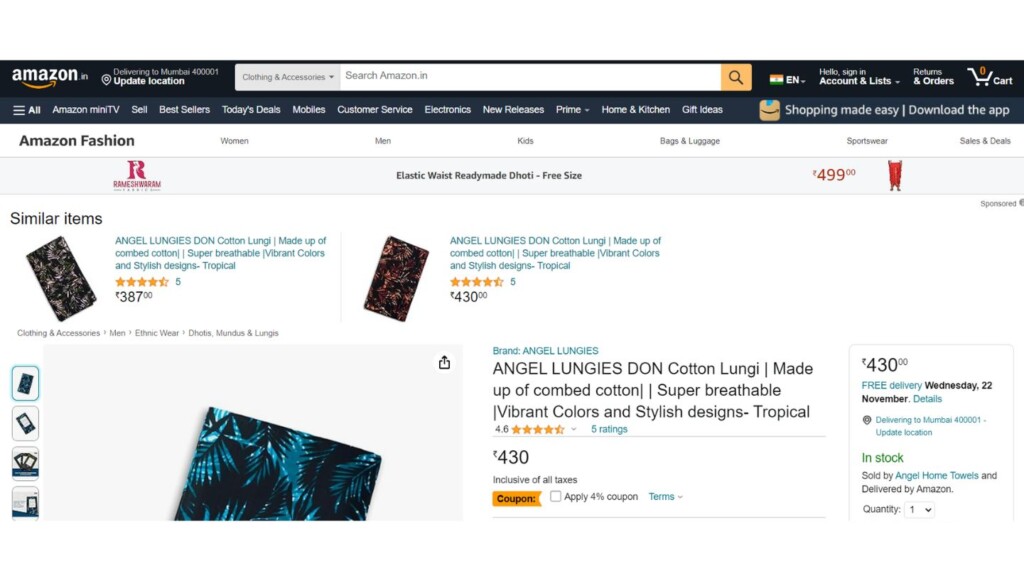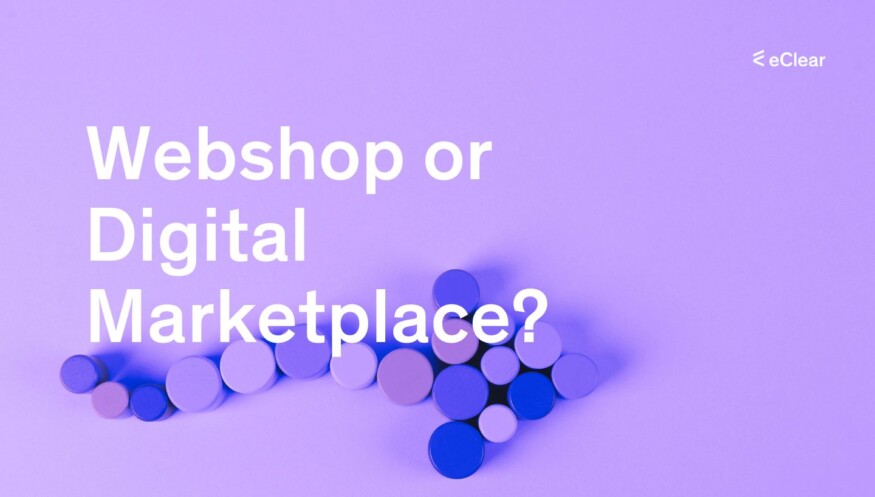In e-commerce, professionals frequently face a pivotal decision that shapes their digital commerce strategy: should they establish an online shop or a marketplace? This choice is not just a technical consideration but a fundamental question that can define the trajectory of a business, especially in the context of European cross-border commerce.
Understanding the nuances of these two models is critical for professionals navigating the complexities of selling across borders. This guide aims to delve into the heart of this decision, exploring each choice’s benefits, challenges, and strategic implications. We will provide insights to help you align your e-commerce strategy with your business goals by weighing factors such as market trends, customer reach, and scalability. If you’re a startup entrepreneur or an established business expanding into new markets, this exploration will help you make an informed decision that resonates with your vision in the landscape of European e-commerce.
Understanding Online Shops and Marketplaces

Online Shops: An online shop represents a digital shopfront owned and operated by a single vendor. It offers a specific range of products or services, often tailored to a niche audience. The key characteristics of an online shop include complete control over product selection, pricing, customer experience, and branding. This model is ideal for businesses with a clear brand identity and a targeted product range.
Marketplaces: In contrast, a marketplace serves as a digital platform where multiple vendors can list and sell their products. It acts as an intermediary, connecting buyers and sellers. Marketplaces are characterised by their vast selection of products, diverse vendor base, and focus on facilitating transactions rather than selling any specific product. This model is suitable for businesses that aim to leverage an existing customer base and offer a broad range of products without managing inventory directly.
Both models have distinct advantages. Online shops offer greater control and brand consistency, while marketplaces provide access to a larger customer base and reduced overheads in inventory management. The decision between the two hinges on factors such as the scale of operation, target market, and long-term business goals.
Market Trends in European Cross-Border Commerce
European e-commerce is witnessing a significant shift, with cross-border transactions gaining momentum. The increasing consumer preference for diverse product offerings, competitive pricing, and the convenience of shopping from international vendors drives this trend.
A notable trend is the rise of niche markets within the European Union, where consumers seek unique, specialised products not readily available in their home countries. This shift presents a lucrative opportunity for online shops focusing on specific product categories. Conversely, marketplaces are capitalising on this trend by offering a wide range of products from various international vendors, catering to the diverse needs of European consumers.
The European e-commerce market also faces unique regulatory and logistical challenges, particularly with the complexities of VAT and customs regulations across different countries. Adapting to these regulations is crucial for seamless cross-border transactions.
These market dynamics necessitate a strategic approach to choosing between an online shop and a marketplace. Businesses must consider factors such as target audience preferences, regulatory compliance, and logistical capabilities in their decision-making process.
SEO Strategies for Online Shops and Marketplaces

SEO is a critical component in the success of any e-commerce model, be it an online shop or a marketplace. The right SEO strategy can significantly enhance visibility, attract the right audience, and increase conversions.
For Online Shops
- Focus on specific, niche keywords related to your products and brand.
- Implement technical SEO to ensure your website is fast, mobile-friendly, and easy to navigate.
- Use content marketing to build brand authority and engage your target audience.
- Leverage social media and email marketing to drive traffic and build customer relationships.
For Marketplaces
- Optimize for broader, high-volume keywords that align with various products offered.
- Ensure robust site architecture to handle many product listings and vendors.
- Implement strategies to manage duplicate content issues common in marketplaces.
- Utilize user-generated content like reviews and ratings to boost SEO.
Both models require a tailored approach to SEO. While online shops need to focus on building a unique brand presence, marketplaces must manage the complexity of multiple vendors and a broader product range.
Case Studies
Online Shop Success: Ad Hoc Atelier

Background: Ad Hoc Atelier, an Italian e-commerce platform offering exclusive clothing collections and accessories, faced a significant challenge. Established in 2011, the company had a high cart abandonment rate, much higher than the industry average.
Challenge: Their primary issue was the high rate of cart abandonment, mainly caused by long response times and a need for more personalisation in customer interactions.
Solution and Results: The company implemented live chat tools to provide a more personalised and efficient customer service experience. This strategy led to impressive results:
- The conversion rate increased from 0.35% to 0.9%.
- The cart abandonment rate decreased from 83% to 73%.
- The average response time was reduced from 3 hours to 1 minute.
The use of live chat tools effectively recreated the experience of an in-store assistant, leading to a boost in customer engagement and sales.
Marketplace Success: Angel Home Towels on Amazon

Background: Angel Home Towels, a new brand in the fashion industry specialising in premium bath towels, Lungies (Dhotis), and Kavi apparel, decided to expand into Amazon’s competitive marketplace.
Challenge: As a newcomer, the company needed ratings, reviews, and an established presence on Amazon.
Solution and Results: The brand employed a multi-faceted approach, including:
- Optimised SEO product detail pages.
- Strategic advertising campaigns using a mix of targeting strategies.
- Promotions and coupons to incentivise purchases and reviews.
- Utilising Fulfilment by Amazon (FBA) to enhance credibility.
- Creating a dedicated brand store on Amazon.
- Producing product videos and video ads to engage customers.
- Focusing on message and brand positioning.
These strategies resulted in Angel Lungies achieving bestseller status within 15 days and securing five placements within Amazon’s “Hot New Releases” top ten.
Conclusion
Navigating the decision between establishing an online shop or a marketplace is a strategic choice that shapes the future of any e-commerce business, especially in the context of European cross-border commerce. This article has explored the nuances of each model, considering market trends, audience preferences, product types, and logistical challenges. We’ve seen through case studies how tailored strategies in customer engagement and brand positioning can lead to success in both models.
eClear’s VAT Services: Streamlining E-Commerce
The choice between an online shop or a marketplace should align with your business goals, considering factors like brand control, market niche, scalability, and diversity. Understanding your unique business needs and the evolving European e-commerce market is crucial. Adaptability and customer focus are key to success. To support this, eClear offers comprehensive tax processing services for cross-border B2C transactions in Europe, simplifying the VAT process for online merchants. This service is tailored to the specific needs of individual transactions, helping merchants navigate the complexities of international e-commerce taxes.
ClearVAT® for Embedded Tax Payment
ClearVAT® takes over the complete processing of a merchant’s VAT obligations, including registration, reporting, and liability. This service mainly benefits digital platforms, relieving marketplaces of their VAT obligations. By embedding tax payment solutions into the platform, ClearVAT® significantly reduces the administrative burden on merchants, allowing them to focus more on their core business activities.
VATRules® for correct tax rate calculation
VATRules® is a solution that aims to simplify VAT compliance for online retailers. This product provides a comprehensive database of VAT rates and rules for over 10,000 product groups in all EU Member States. VATRules® helps retailers to automatically determine the correct VAT rates for their products, regardless of the EU country in which they are sold. This solution is precious for traders who sell various products in different European countries and must always comply with the applicable VAT rules. VATRules®, therefore, make it easier to comply with complex and frequently changing VAT legislation, saving considerable time and resources.
CheckVAT ID® for Compliance
CheckVAT ID® is a tool designed to optimise VAT ID validation across all EU member states. This feature offers instant verification and real-time accuracy, ensuring maximum compliance in cross-border trade. The tool’s industry-leading security measures provide merchants with the confidence that their transactions are fully compliant with EU regulations.
SPOT® – The Revenue Manager
SPOT® serves as an omnichannel transaction dashboard for merchants, providing real-time alerts on cross-border VAT, customs, and compliance. It aggregates merchant invoice data from shops and platforms into a single overview, identifying compliance and regulatory requirements. With the AVATAR (Automated VAT Audit and Reporting Assistant), SPOT® offers solutions to meet and automate these requirements, streamlining the entire process for merchants.








